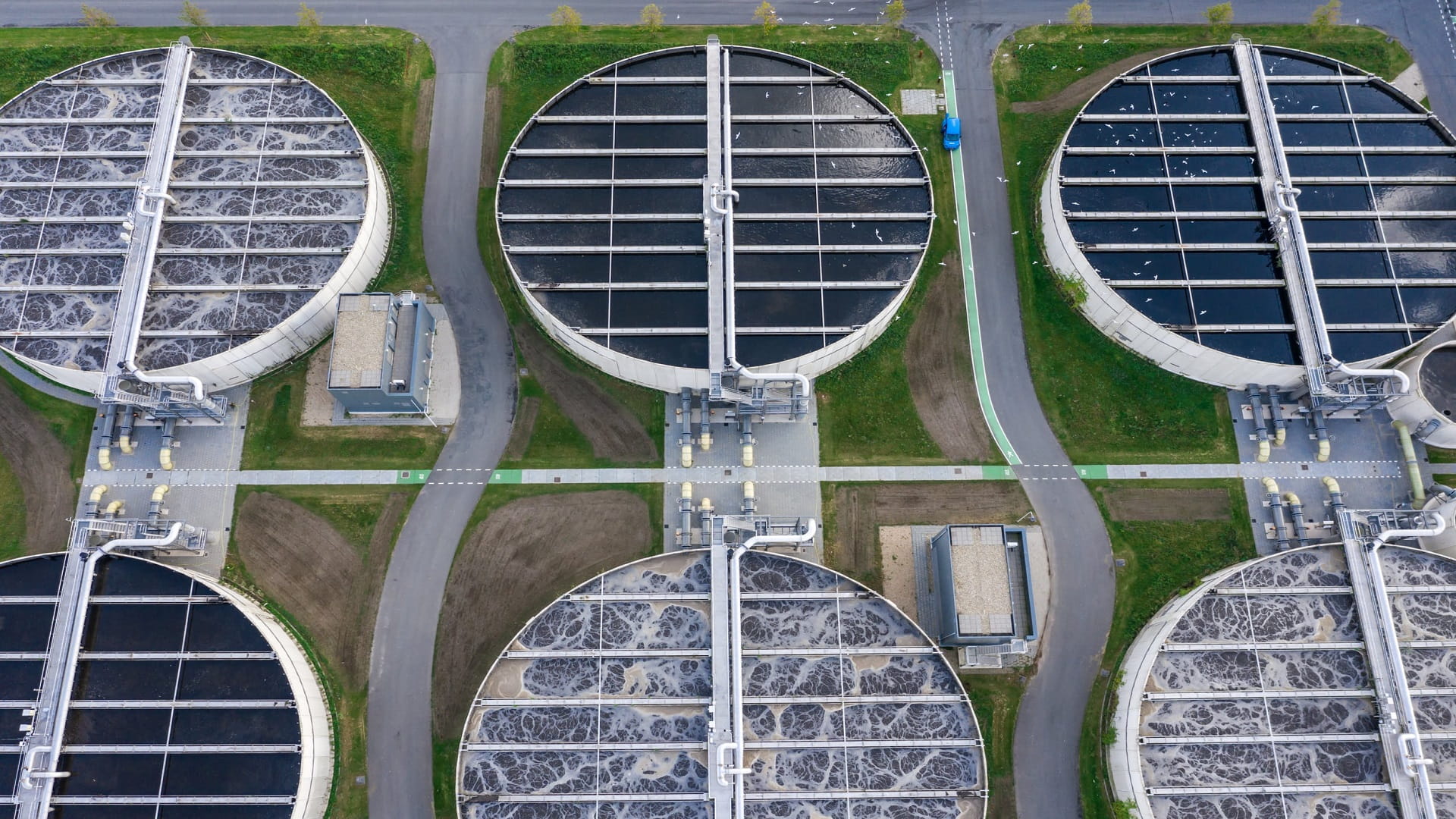AMP8: The problem with ferric

We need to talk about ferric. With stringent wastewater phosphorus regulations just around the corner, UK utilities risk finding themselves even more reliant on inconsistent chemical supplies at a volatile price. Meanwhile, flocculant over-use comes with its own implications for quality, safety, and costs.
Breaking the industry’s ferric addiction isn’t going to be easy; the new phosphorus limits are daunting. But there’s hope: a combined biological approach, using a single processing tank, has been shown to meet the new limits, with very low ferric dosing ratios and no tertiary filtration.
Four benefits of reduced ferric
- Less caustic chemicals required to balance the pH
- Lower CAPEX and OPEX costs from a single-tank process
- No need for tertiary treatment construction or maintenance
- Reduced reliance on unpredictable chemical supplies
New AMP cycle, new regulations
It’s a challenging time for the UK water sector. In addition to the unpredictable external factors facing everyone, the deadline for the industry’s 2030 Net Zero commitment is looming. Meanwhile, the next five-year Asset Management Plan (AMP) cycle starts in 2025, bringing a whole new set of nutrient limits.
These timeframes mean the clock is ticking for UK water utilities to implement infrastructure initiatives that have a meaningful impact.
Take phosphorus, for example. In AMP8, limits at some UK sites will be set as low as 0.2 mg/litre – a significant tightening from current standards – and in areas such as the Lake District, they could be set as low as 0.1.
That’s not just a drop in the ocean – that’s like trying to find the phosphorus in the drop in the ocean.
To reach those ultra-low levels is going to be tough, and makes the use of ferric salts essential; no biological method can achieve them in isolation. But with concerns around supply, cost, safety, and sustainability, the answer to meeting ever-lower phosphorus limits can’t be “Just keep adding more ferric.”
Putting the spotlight on ferric
Excessive ferric use isn’t just unsustainable from an environmental point of view (each kg of ferric chloride contributes about the equivalent of a kg of CO2); it’s also damaging at an operational level.
First, there’s the pH to control. Corrosion due to excess ferric means more maintenance and contributes to shorter tank and pipework lifetime. But neutralising it is a real issue: to limit costs and safety risks, you should really reduce the amount of alkali you store and handle – not increase it.
Also, all those ferric precipitates are going to have to be separated from the treated water – usually with tertiary treatment. And that gets expensive.
If you choose barrier filtration, the possibility of clogged filters adds an extra level of complexity to the process. In any case, those filters need to be installed, checked, replaced, and the filtered floc disposed of – which all increases your operating costs.
Of course, none of this matters if you can’t get the chemicals in the first place.
Not only is ferric in high demand around the world, making prices vary wildly, but the supply chain itself can be unreliable. As recently as 2021, a shortage of lorry drivers meant the UK’s supplies of ferric sulphate had to be ringfenced for drinking water production.
Faced with all these challenges, can UK water treatment works use limited amounts of ferric in a smarter way that keeps costs down without compromising reliability, health and safety, and sustainability?
Amplifying ferric through biological treatment
Tuned the right way, established biological processes can do a lot of the heavy lifting. In many parts of the world, plants using Nereda have managed to phase down chemical use by 95% or more – and in some cases eliminate it completely – while still meeting their nutrient removal standards.
That’s a good start. But it’s unlikely that any biological process alone will reliably meet the UK’s stringent new phosphorus limits under AMP8.
However, full-scale pilot tests at UK plants equipped with Nereda have shown using an optimised combined chemical/biological treatment, consistently achieves phosphorus levels below 0.5 mg/l. Dosing rates were shown to be a fraction of those for either chemical treatment alone or combined with other bio-P plants.
What’s more, no tertiary filtration is required.
Nereda: Smarter phosphorus removal
Nereda’s adaptability allows treatment plants to optimise the way ferric is used in their current processes, without the need for significant CAPEX or OPEX investments.
Firstly, Nereda’s intelligent controller optimises each cycle depending on the influent water quality. From adding the right amount of ferric to tailoring the residence time, Nereda automatically ensures the guidelines on phosphorus levels in effluent water are always met.
Also, treatment works using Nereda can add ferric at the first stage of the water treatment process – without affecting the biological activity of the bacteria.
And, because the biological process contributes to the reduction in phosphorus, treatment plants only need a low ferric dosing ratio to reach ultra-low levels of phosphorus.
Finally, with Nereda’s single-tank system, there’s no need for tertiary treatment, as the ferric residues stay in the same tank as the granular sludge without affecting its quick-settling properties. They can then be removed when the sludge is refreshed.
Altogether, these benefits deliver significant cost and maintenance savings by getting more from a limited ferric supply – and eliminating the complexity of the tertiary filter stage.

With Nereda, you don’t need to engineer in extra steps, extra time, and extra cost – just to ensure compliance. It’s all there to begin with.
Nereda® technology
Nereda technology offers sustainable wastewater treatment solutions for municipal and industrial water. The natural sewage treatment process purifies water, using little or no chemicals, through proprietary aerobic granular sludge technology.

Keeping the UK on track
Judging by the results from CIP2, it seems that the UK water sector is on the right track to reducing levels of impurities in effluent streams. However, to keep meeting those limits when they get even lower, the UK has to make prudent use of limited ferric supplies.
Ultimately, it will require a practical and sustainable approach to ferric – and all the chemicals used in wastewater treatment. But tried-and-tested biological approaches like Nereda provide a reliable, high-performing foundation to build upon.
Nereda is already in use on six continents. With its compact single-tank footprint, it’s comparatively simple to deploy – whether as a retrofit, modular installation, or on a greenfield site. In fact, the 100th Nereda project has just been announced, an exciting milestone for GWI’s breakthrough technology of the decade.
Stay up-to-date
Would you like to stay up to date on the latest news, developments and trends from Royal HaskoningDHV on the UK water utilities market?
Got a question?
Contact our Water Technology experts!